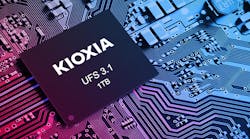The ever-increasing performance, speed, and density requirements of small and mobile devices have sped the adoption of UFS over e-MMC in recent years. Today, UFS is the dominant flash memory in smartphones. Built to the JEDEC 3.1 standard, UFS has interface speeds of 2.332 GB/sec, almost six times faster than the 400 MB/sec interface supported by the most recent e-MMC version, 5.1. In this FAQ, we examine the four new features, advantages and 5G-capable applications of modern UFS.

Sponsored Content
How Universal Flash Storage (UFS) Is Changing the “Mobile Universe”
May 4, 2021
